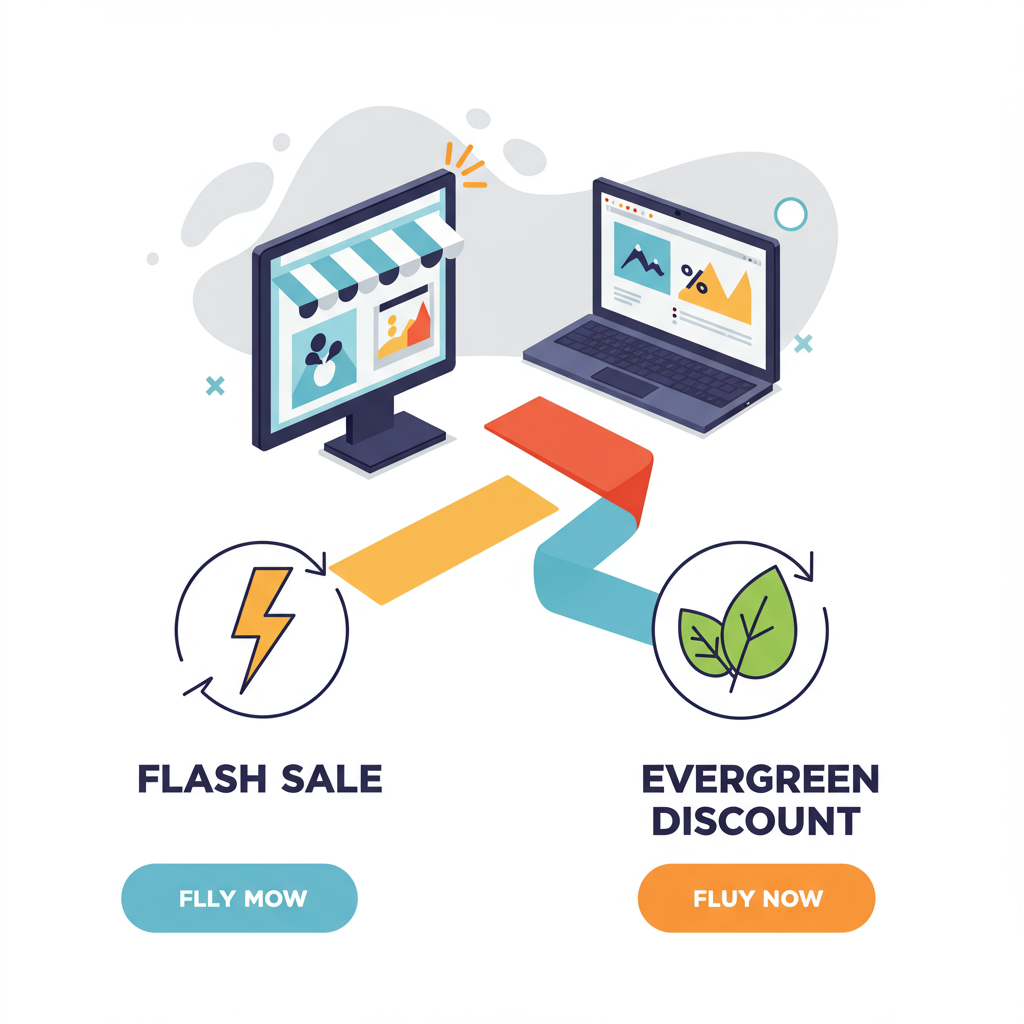A comprehensive guide for merchants on leveraging different coupon strategies to boost sales and build customer loyalty.
As a Shopify merchant, I’m constantly looking for effective ways to drive sales, attract new customers, and retain existing ones. One of the most powerful tools in our arsenal is the humble coupon code.
However, not all coupons are created equal. There are distinct strategies behind different types of discounts, and understanding when and how to deploy them can significantly impact your bottom line.
Today, I want to dive deep into two primary coupon strategies: Flash Sales and Evergreen Discounts. Both have their unique strengths and weaknesses, and knowing which to use for specific goals is crucial.
Let’s start with Flash Sales. These are characterized by their short duration and often significant discounts. Think ’24-hour sale’ or ‘weekend special.’
The primary goal of a flash sale is to create urgency and drive immediate, high-volume purchases. They are designed to make customers feel like they need to act now or miss out on a great deal.
From my experience, the pros of flash sales are compelling. They can generate a rapid surge in sales, helping you clear old inventory quickly or boost cash flow.
They’re also excellent for creating buzz around your brand, attracting new customers who might be drawn in by the deep discount, and even re-engaging dormant customers.
Flash sales can be incredibly effective for product launches, seasonal events like Black Friday, or simply to inject excitement into your marketing calendar.
However, there are downsides. Over-reliance on flash sales can devalue your brand in the long run. Customers might start to expect deep discounts and delay purchases, waiting for the next sale.
They can also erode your profit margins if not managed carefully, especially if you’re discounting popular items too frequently.
When implementing flash sales on Shopify, I typically use time-limited discount codes. You can set specific start and end dates, and even limit the number of uses or to specific customer segments.
Apps that provide countdown timers on product pages or banners can amplify the urgency, making the ‘fear of missing out’ even more potent.
My strategy tips for flash sales include clear communication of the offer’s expiry, highlighting the limited stock if applicable, and a strong call to action. Pre-promotion can also build anticipation.
Now, let’s shift our focus to Evergreen Discounts. Unlike flash sales, these are long-term, consistent offers that are always available, often under specific conditions.
Examples include ‘10% off your first order,’ ‘free shipping over $50,’ or ‘buy two, get one free.’ They lack the immediate urgency of flash sales but offer consistent value.
The main benefits of evergreen discounts are centered around building loyalty and encouraging repeat purchases. They provide a steady incentive for customers to choose your store.
They’re fantastic for welcome offers to new subscribers, loyalty programs that reward repeat customers, or abandoned cart recovery sequences.
Evergreen discounts can also be used to incentivize specific behaviors, like signing up for a newsletter, leaving a review, or purchasing in bulk.
The cons are fewer, but worth noting. They don’t create the same immediate sales spikes as flash sales, and if not positioned correctly, customers might take them for granted.
They also require careful consideration of your profit margins to ensure they remain sustainable over time, as they are a continuous cost.
On Shopify, I implement evergreen discounts using automatic discounts for things like free shipping thresholds, or unique discount codes for welcome offers that are sent via email automation.
Customer groups can also be leveraged to offer exclusive evergreen discounts to loyal customers or wholesale clients.
My strategy tips for evergreen discounts include making the conditions clear and simple, considering tiered discounts for higher value purchases, and personalizing offers where possible.
So, when do I use which? I find flash sales are best for short-term goals: clearing inventory, boosting sales during slow periods, or creating a splash for a new product.
Evergreen discounts, on the other hand, are my go-to for long-term relationship building, increasing average order value, and reducing cart abandonment.
Can they be combined? Absolutely! I often use evergreen discounts as a baseline, then layer flash sales on top for special occasions. This creates a dynamic pricing strategy.
The impact on customer perception is key. Flash sales can make customers feel like they’ve scored a deal, while evergreen discounts foster a sense of consistent value and appreciation.
Ultimately, both strategies impact profit margins, so careful calculation of your costs and desired profit is paramount before launching any discount campaign.
Regardless of the type, I always adhere to some general coupon best practices. Always have clear terms and conditions for your discounts.
Track your performance diligently. Monitor conversion rates, average order value, and customer acquisition costs associated with each coupon strategy.
Segment your audience. Not every discount is for every customer. Tailoring offers to specific groups can significantly increase their effectiveness.
Promote your coupons effectively across all your marketing channels – email, social media, website banners, and even SMS.
And finally, always test and iterate. What works for one product or audience might not work for another. Be prepared to adjust your strategy based on the data.
What do you think about these strategies? Have you found one more effective than the other for your Shopify store?
In conclusion, both flash sales and evergreen discounts are powerful tools for Shopify merchants. Flash sales drive urgency and immediate sales, while evergreen discounts build loyalty and provide consistent value.
By understanding their unique characteristics and applying them strategically, you can optimize your pricing, boost your sales, and cultivate a thriving customer base.
It’s not about choosing one over the other, but rather integrating both into a cohesive and dynamic pricing strategy that serves your business goals.






